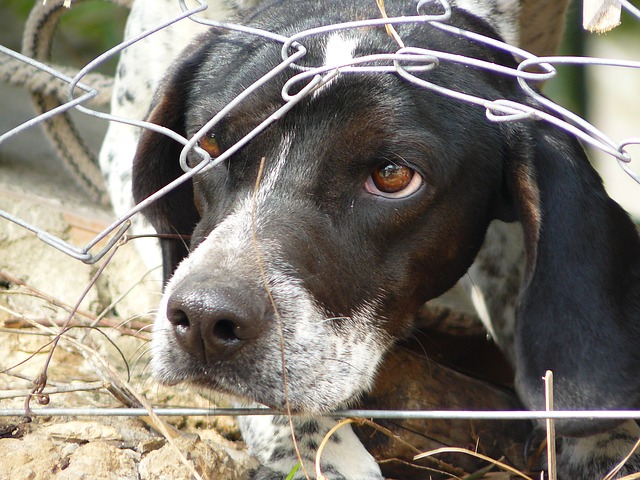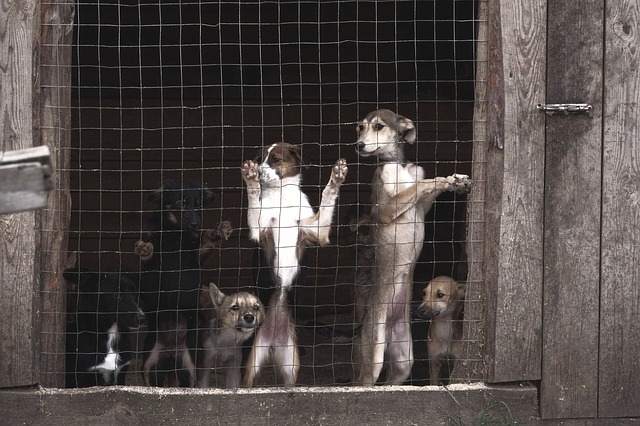Adopting, volunteering, and donating are all part of being an animal advocate, but there’s another important piece of that puzzle. Dogs rely on compassionate people to speak up for them. They need neighbors, friends, and random strangers to recognize the signs of trouble and do something about it. Whether it’s a case of neglect or physical abuse, what you decide to do when you witness animal cruelty matters.
Reporting animal cruelty saves lives, and no one should ever turn their back on an animal in need. Knowing what to do, who to talk to, and what to expect is important. Speaking up for animals is always the right thing to do. Here’s how you can save a life.

Step 1: Assess the Situation
In some cases, animal cruelty is obvious. You see a person beat a dog or find an emaciated puppy with a chain around it’s neck, and you know exactly what’s going on. Other situations, however, aren’t as clear-cut. Before you take further action, make sure you know what you’re looking at. Jumping to conclusions won’t help anyone, but at the same time, it’s important to take your concerns seriously.
If you suspect cruelty, try going back to the dog’s location at different times of the day to see if conditions change. If you can, talk to neighbors or try communicating with the dog’s owner. Remember, there are several different types of animal cruelty, and some are more obvious than others. Hoarding situations, abandonment, neglect, organized fighting, physical abuse, and leaving a dog in a hot car all fall under the category of animal cruelty. Recognizing what’s happening will depend on the details.
If you’re still not sure, look for these blatant signs of animal cruelty:
- Dog is always outside with no shelter
- Collar is cutting into the dog’s neck
- Dog looks skinny and emaciated
- Fur is matted and filthy
- Signs of mange
- Open wounds or other injuries
If you take the time to consider all possibilities and still feel like the dog is suffering, go with your gut. It’s always better to report potential abuse than keep quiet and risk the dog’s future safety.

Step 2: Start Gathering Evidence
Your word will be enough to file a report, but you’ll help the investigation if you can contribute hard evidence. ASPCA advises everyone who witnesses animal cruelty to create a written factual statement including dates and approximate times. Photographs and videos of the location, the animal, and specific signs of cruelty (empty water dish, inadequate shelter, etc) will also be useful. Remember, however, you should never put yourself in danger to gather evidence. It is illegal to trespass on another person’s property, and getting too close to the animal could cause them to react aggressively out of pain or fear. Gather what information you can from a distance and organize the facts before calling for help.
Step 3: Contact the Right Authorities
Depending on your area, you have several options for whom to call and make your report. Your first choice should be the local animal control agency. A quick Google search should give you the information you need.

If your area doesn’t have an official animal control agency or you’re having trouble finding their information, call your local police. Some police departments have specific units for animal-related cases, and others will be able to direct you to the proper agency. Once you file a report with the police, they’re legally bound to follow up.
For violent crimes that are currently in progress, call 911. It’s important to get the animal help as soon as possible, and that means you don’t have time to look up additional phone numbers. Communicate the exact address of the incident and all other details you can collect. If you feel the need to stick around, keep your distance until help arrives.
Step 4: Support the Investigation, but Don’t Interfere
When a suffering dog is involved, it always feels like time is moving too slow. You want the police to break down the door and carry the dog off to a new, better life. In the worst cases, that’s often what happens. But depending on the situation, animal cruelty investigations can take time.
Ignorance is at the heart of many neglect cases. Not everyone knows how to properly care for a dog, and those honest mistakes unfortunately put a dog’s life in danger. Facts like how a dog’s fur doesn’t keep it from getting cold in winter aren’t always common knowledge. Even the idea that puppies grow out of their collars isn’t obvious to everyone who brings home a new pet. Sometimes simply educating a person about what they’re doing wrong and how to do better is enough to fix the situation. Even more common, people are willing to voluntarily surrender their pets. The point is, there are several ways an animal cruelty investigation could unfold. After passing on everything you know, your role is to let the officials do their jobs.

Officials might not be able to give you details about the case, but it’s important to remain helpful while being patient. Ways you can continue to contribute include providing your contact information and telling authorities you’d be willing to testify in court if necessary. If you don’t hear anything about the case in a reasonable amount of time, make a polite phone call to ask about the progress.
REMEMBER
It is illegal to enter someone’s property and remove an animal on your own. Once you present your concerns to the right authorities, they are required to investigate. Letting the professionals take over is the absolute best thing you can do for a dog in need. Police and animal officials know the local laws and will do everything they can to protect the animal.
Step 5: Spread Awareness

Unfortunately, a world where animal cruelty doesn’t exist is a long way off. You can’t save every suffering dog, but there are still active things you can do in your community to bring about positive change. The biggest issue is education. Countless neglect cases can be avoided if more people know about proper pet care. You can help by scheduling speakers to talk to your school, church, or any other organization you belong to. American Humane also suggests passing out pamphlets about pet care and behavior to people you know with new pets.
Another important part of fighting animal cruelty is familiarizing yourself with your area’s anti-cruelty laws. These vary from state to state and even from city to city. Thanks to a renewed awareness, animal cruelty laws also change often. Authorities are recognizing animal abuse as part of a cycle of violence, and many states are changing laws to make consequences for animal cruelty more severe. You can help by supporting new anti-cruelty initiatives and encouraging local law makers to take action against offenders.
You can also spread awareness by sharing this article with family friends so they too know what to do when faced with the reality of animal cruelty.
Sources: American Humane, Humane Society of the United States, ASPCA
 Toledo, United States.
Toledo, United States.